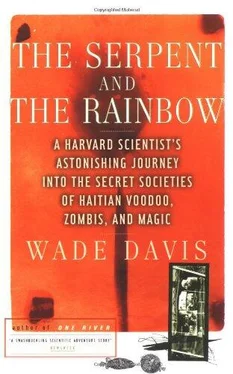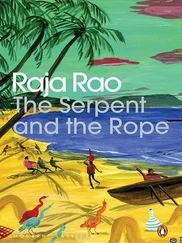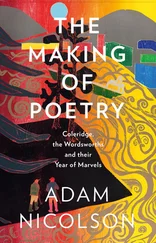Wade Davis - The Serpent and the Rainbow
Здесь есть возможность читать онлайн «Wade Davis - The Serpent and the Rainbow» весь текст электронной книги совершенно бесплатно (целиком полную версию без сокращений). В некоторых случаях можно слушать аудио, скачать через торрент в формате fb2 и присутствует краткое содержание. Год выпуска: 1985, Издательство: Simon & Schuster, Жанр: Старинная литература, на английском языке. Описание произведения, (предисловие) а так же отзывы посетителей доступны на портале библиотеки ЛибКат.
- Название:The Serpent and the Rainbow
- Автор:
- Издательство:Simon & Schuster
- Жанр:
- Год:1985
- ISBN:нет данных
- Рейтинг книги:5 / 5. Голосов: 1
-
Избранное:Добавить в избранное
- Отзывы:
-
Ваша оценка:
- 100
- 1
- 2
- 3
- 4
- 5
The Serpent and the Rainbow: краткое содержание, описание и аннотация
Предлагаем к чтению аннотацию, описание, краткое содержание или предисловие (зависит от того, что написал сам автор книги «The Serpent and the Rainbow»). Если вы не нашли необходимую информацию о книге — напишите в комментариях, мы постараемся отыскать её.
The Serpent and the Rainbow — читать онлайн бесплатно полную книгу (весь текст) целиком
Ниже представлен текст книги, разбитый по страницам. Система сохранения места последней прочитанной страницы, позволяет с удобством читать онлайн бесплатно книгу «The Serpent and the Rainbow», без необходимости каждый раз заново искать на чём Вы остановились. Поставьте закладку, и сможете в любой момент перейти на страницу, на которой закончили чтение.
Интервал:
Закладка:
“Datura must be the principal ingredient in the poison,” Douyon continued. “It is a powder that is placed in the form of a cross on the ground or across the threshold of a doorway. The peasants say that the victim succumbs just by walking over the cross.”
“How much of this powder?”
“Very little, no more than a spoonful.”
“Just on the bare ground?”
“The toxins must be absorbed through the feet,” he concluded.
This I had trouble with. In East Africa certain tribes surreptitiously administer poisons by coating spiny fruits and placing them along footpaths. Datura is topically active, but without at least this type of mechanical aid it was difficult to imagine it or any substance passing through the callused feet of a peasant. It was also unclear how the poisoner, who was supposed simply to sprinkle the powder on the threshold of a hut, might ensure that only the intended victim suffered. I was curious whether Douyon had attempted to contact individuals responsible for making the zombi poison.
“I know a bokor in Saint Marc,” he replied, “who supplied me with a vial of the poison, a white powder.”
“Marcel Pierre?”
“You know him?” He seemed surprised.
“I got his name from the BBC. I was with him several days ago. Was that the white powder that you sent as a sample to Kline?”
“We had no facilities here to test it. Kline never sent me any results.”
“There weren’t any, at least nothing positive.”
Douyon was disappointed, until I mentioned that the preparation obtained by the BBC had shown some biological activity.
“Did they get it from Marcel Pierre?” he asked. I nodded and he looked away. “Strange man, this Pierre. Did he tell you how many he has killed?”
“No.”
Douyon frowned. “These people are criminals,” he said. “It is always dangerous.” He told me how he had once taken a foreign film crew to a cemetery in the town of Desdunnes to attempt to document a zombi being taken from the ground. They had been met at the entrance to the graveyard by an armed band of peasants who destroyed their cameras and placed them in jail overnight. He had never tried it again.
Douyon rose and started out to take a call. Before leaving he passed me a paper from a folder on his desk. It was a copy of a legal document, Article 249 of the Haitian penal code, that referred specifically to the zombi poison, prohibiting the use of any substance that induced a lethargic coma indistinguishable from death. It indicated that should a victim of such poisons be buried, the act would be considered murder no matter what the final result. The Haitian government apparently recognized the existence of the poison with some assurance. I had a look at several other papers in the folder. One was Clairvius Narcisse’s medical dossier from the time of his death at the Schweitzer Hospital. I noted his symptoms: pulmonary edema leading to acute respiratory difficulties, rapid loss of weight, hypothermia, uremia, and hypertension.
I was not sure what to make of Douyon. On the one hand I had nothing but respect for his tenacious efforts, which after close to twenty frustrating years had finally yielded the provocative cases of Narcisse and Francina Illeus. Yet his pursuit of the reputed zombi poison had been less successful, and he seemed uncertain whether its formula would ever be discovered. He remained convinced that the active ingredient was datura, the same logical choice I had made when formulating my Calabar hypothesis. Yet despite his years of research, the only evidence that implicated datura was the fact that the plant was called the zombi’s cucumber. The experiments he had conducted at McGill years before meant very little; any number of plant extracts injected into mice might induce a catatonic stupor. Datura might still be the prime candidate, but after more than twenty years Douyon had done little to test his hypothesis. He had yet to obtain a documented preparation of the poison.
There was another problem. As a Western psychiatrist he had redefined a zombi as a man or woman who—having been poisoned, buried alive, and resuscitated—manifested a certain set of symtoms. Yet the measure of a victim’s psychiatric condition could never explain why an individual had become a victim in the first place. For example, in psychiatric terms, a zombi might be called a catatonic schizophrenic; both conditions are characterized by incoherence and catalepsy with alternate moments of stupor and activity. But catatonic schizophrenia as a syndrome exists worldwide and may result from a number of different processes that severely disrupt mental stability—including, perhaps, zombification. Certainly, if Narcisse’s testimony was to be believed, we were talking about an extraordinary phenomenon that actually caused an individual to be buried alive. Such a traumatic experience might readily drive one mad. But a zombi represented far more than a set of symptoms; if true, zombification was a social process unique to a particular cultural reality. There had to be men and women actually creating this poison, deciding how, when, and to whom it should be administered, and completing the act by distributing and caring for the victims. Above all, if zombis actually existed, there had to be a reason, an explanation rooted in the structure and beliefs of the Haitian peasant society. Rather than seeking the cause and purpose of zombification within that traditional society, Douyon assumed zombification to be a random criminal activity and limited his efforts to observing and treating its effects. One point he had made about Francina Illeus’s case had been particularly curious. When he attempted to return her to her home village, the family had refused to accept her. Douyon had explained that the people could not afford to feed an unproductive person. Yet in the short while that I had been in Haiti, I had already seen evidence that the elderly and infirm were well cared for by their families. I had an intuitive feeling that in her village, Francina represented far more than an extra mouth to feed.
A steel door opened behind me, and I heard the shuffling of bare feet on concrete. Douyon returned, trailed by a nurse and two patients. One of them I recognized.
When representatives of two completely different realities meet, words like normal become relative. I was in no position to judge if Clairvius Narcisse had been permanently affected by his ordeal. Physically he appeared fit. He spoke slowly but clearly. When questioned about his experience, he repeated basically the same account that I had heard from Nathan Kline. But he added certain extraordinary details. A scar he bore on his right cheek just to the edge of his mouth had been caused by a nail driven through his coffin. Quite incredibly, he recalled remaining conscious throughout his ordeal, and although completely immobilized, he had heard his sister weeping by his deathbed. He remembered his doctor pronouncing him dead. Both at and after his burial, his overall sensation was that of floating above the grave. This was his soul, he claimed, ready to travel on a journey that would be curtailed by the arrival of the bokor and his assistants. He could not remember how long he had been in the grave by the time they arrived. He suggested three days. They called his name and the ground opened. He heard drums, a pounding, a vibration, and then the bokor singing. He could barely see. They grabbed him, and began to beat him with a sisal whip. They tied him with rope and wrapped his body in black cloth. Bound and gagged, he was led away on foot by two men. For half the night they walked north until their party was met by another, which took custody of Narcisse. Traveling by night and hiding out by day, Narcisse was passed from one team to the next until he reached the sugar plantation that would be his home for two years.
Читать дальшеИнтервал:
Закладка:
Похожие книги на «The Serpent and the Rainbow»
Представляем Вашему вниманию похожие книги на «The Serpent and the Rainbow» списком для выбора. Мы отобрали схожую по названию и смыслу литературу в надежде предоставить читателям больше вариантов отыскать новые, интересные, ещё непрочитанные произведения.
Обсуждение, отзывы о книге «The Serpent and the Rainbow» и просто собственные мнения читателей. Оставьте ваши комментарии, напишите, что Вы думаете о произведении, его смысле или главных героях. Укажите что конкретно понравилось, а что нет, и почему Вы так считаете.












